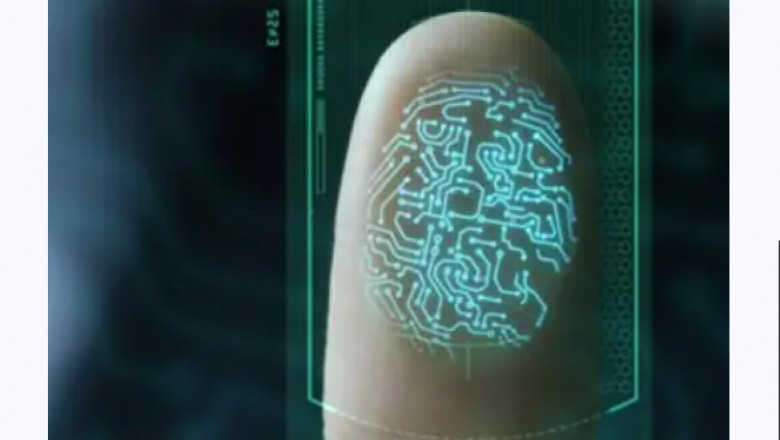views
The Future of Secure Identity Verification: NFC and Facial Biometric Authentication
In today's digital era, businesses and individuals demand faster, more secure, and seamless identity verification solutions. With cyber threats on the rise, traditional verification methods are proving inadequate. Two cutting-edge technologies—Near Field Communication (NFC) identity verification and facial biometric authentication—are revolutionizing the security landscape. These methods offer unparalleled accuracy, convenience, and security, making them the preferred choice for businesses across various industries.
What is NFC Identity Verification?
NFC identity verification utilizes Near Field Communication technology to authenticate an individual’s identity using an NFC-enabled device, such as a smartphone or a contactless card reader. This method allows secure and contactless transmission of identity credentials, eliminating the risks associated with manual document verification.
NFC verification is particularly useful for passport and national ID verification, as modern identity documents come embedded with NFC chips. When an NFC-enabled device scans these chips, it retrieves encrypted data such as the individual’s name, date of birth, and a digital signature. This data is cross-checked with official databases, ensuring authenticity and reducing fraud.
Key Benefits of NFC Identity Verification
-
Enhanced Security: NFC chips store encrypted data, making them highly resistant to tampering or counterfeiting.
-
Seamless User Experience: Contactless verification speeds up the authentication process without the need for physical interaction.
-
Regulatory Compliance: Many government-issued IDs and passports are embedded with NFC chips, making NFC verification compliant with international security standards.
-
Reduced Fraud: Real-time cross-referencing with authoritative databases significantly minimizes identity fraud.
Understanding Facial Biometric Authentication
Facial biometric authentication is an advanced security measure that verifies a person’s identity based on unique facial features. This technology uses artificial intelligence (AI) and machine learning algorithms to analyze and match facial patterns, ensuring accurate identity confirmation.
The process involves capturing an individual’s facial image through a camera and converting it into a digital template. This template is then compared against stored facial data to grant or deny access. Facial biometrics are widely used in banking, travel, healthcare, and e-commerce sectors, providing a highly secure yet user-friendly verification process.
Advantages of Facial Biometric Authentication
-
Unmatched Accuracy: AI-driven facial recognition systems ensure high precision in identifying individuals.
-
Frictionless Authentication: Unlike passwords or PINs, facial biometrics require no manual input, enhancing user experience.
-
Spoofing Resistance: Advanced anti-spoofing mechanisms detect fake images, videos, or deepfakes, preventing fraudulent attempts.
-
Scalability: Facial biometrics can be seamlessly integrated into various platforms, from mobile applications to border control systems.
The Synergy Between NFC and Facial Biometrics
Combining NFC identity verification with facial biometric authentication creates a multi-layered security framework that ensures the highest level of protection against identity fraud. Here’s how they complement each other:
-
Dual Authentication: NFC verification confirms the authenticity of an official document, while facial biometrics ensure that the document belongs to the rightful owner.
-
Fraud Prevention: The combined approach eliminates identity theft risks by cross-matching official data with real-time facial recognition.
-
User Convenience: Users can verify their identities quickly and securely without needing physical documents or manual verification.
-
Regulatory Compliance: Many industries, including finance, healthcare, and travel, require stringent identity verification. Using NFC and facial biometrics together ensures compliance with regulations like KYC (Know Your Customer) and AML (Anti-Money Laundering).
Industries Benefiting from NFC and Facial Biometrics
Banking and Finance
Banks and financial institutions leverage these technologies for seamless customer onboarding, secure transactions, and fraud prevention.
Travel and Immigration
Automated border control systems use NFC passports and facial biometrics for efficient and secure passenger verification.
Healthcare
Hospitals and medical institutions implement these methods to verify patient identities, reducing medical identity theft.
E-commerce and Retail
Online retailers and payment platforms integrate facial biometric authentication to prevent fraudulent transactions.
Conclusion
NFC identity verification and facial biometric authentication are setting new benchmarks for digital security. Their combination not only enhances security but also streamlines authentication processes, making them ideal for various industries. As technology advances, adopting these solutions will become crucial for businesses aiming to provide secure and frictionless identity verification experiences.
For organizations looking to enhance their security infrastructure, implementing NFC and facial biometrics is a strategic move toward a safer and more efficient digital future.














Comments
0 comment